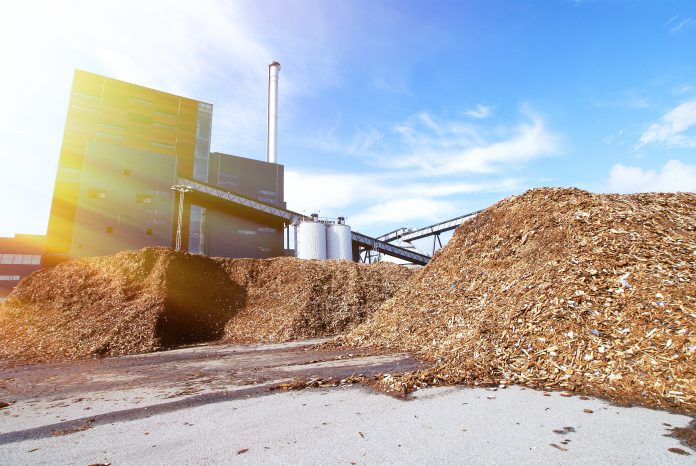Adams Selfstore discusses carbon storage – and how technology is helping to transform carbon emissions into raw materials and fuel for the construction industry
The global energy sector currently releases 32.5 billion tonnes of CO2 emissions into the air every year, according to the International Energy Agency. If we are truly serious about reducing our carbon emissions back to pre-industrial levels and reversing catastrophic climate change, then we will need to start removing around 12 billion tonnes from the atmosphere every year by 2050.
So in short, our carbon emissions need to be cut by a third if we are to prevent the planet from warming to an average of more than 1.5 degrees Celsius by the middle of the century.
During his presidential-elect campaign of 2007, Barack Obama was both criticised and celebrated for claiming that carbon capture could be one of the methods used to combat climate change. The technology was in its infancy then and poorly understood, but today several companies have already demonstrated carbon capture from their own power plants and industrial facilities. Though it is possible, it is still expensive and nowhere near extensive enough to meet the target of 12 billion tonnes reduction.
A new incentive for carbon storage: carbon as a building material
Environmentally conscious innovators are looking to turn carbon storage from a costly endeavour into a lucrative market instead. As luck would have it, carbon can make the ideal raw materials that our society is ever-thirsty for.
For example, Terminal One of San Francisco airport is partly made of captured CO2 transformed into rock. It echoes growing ambitions around the world to turn construction projects into what is essentially a massive carbon sink.
Carbon storage into rocks can cut down on emissions in other ways, too. It can cost a lot to transport rocks, and the prices get more expensive the further away the rock is quarried. Carbon-sequestered rock can be manufactured right on the doorstep of major construction centres, cutting down on transport costs.
And once carbon has been captured and stored into rocks it is very stable and hard to release. In fact, the rocks can persist in theory for millions of years and can only be released when heated up to 700 degrees Celsius or dissolved in a strong acid. There is nothing unnatural or unappealing about carbon storage rocks either: the White Cliffs of Dover by nature store carbon, and are a beautiful testimony to that.
Carbon storage as cement
The cement-industry currently accounts for around 6% of all carbon emissions, and around 4.1 gigatonnes are produced annually. Blue Planet, a California-based company, is currently looking to help reduce emissions in an industry that has pretty much stagnated in its carbon reduction efforts.
Blue Planet came across not one but two innovative approaches to store the carbon safely away in cement. Cement can be made to absorb carbon fairly easily: for example, replacing the conventional binding material that is often used in cement with magnesium oxide – a substance that sucks in carbon dioxide when mixed with water. Another way to store carbon is to trap it by combining calcium with flue gas. This creates calcium carbonate and locks the carbon away.
If more people become aware of these alternatives to creating cement, it would be hugely beneficial in the fight against climate change.
Carbon storage as housing insulation
In Manchester, in the UK, a chemistry start-up called Econic Technologies is working on a way to store carbon in polyurethane foams.
Polyurethane foams are ubiquitously used to make furniture upholstery, car seats, mattresses, and to provide insulation for houses. It is this last point – housing insulation – where Econic is putting their money. By using carbon dioxide from emissions as the ‘feed’ for the production of polymer, Econic hopes to create a form of insulation that is not only eco-friendly but a lot cheaper. Like with the above example of the transportation of ‘real’ rocks from quarrying and carbon storage rocks, creating polyurethane foams in this way eliminates much of the middle-ground activities that will also be releasing harmful carbon emissions into the air. This type of carbon fed insulation, if adopted throughout the UK’s housing industry for housing insulation – could save in emissions the equivalent of taking two million cars off the road.
Carbon as a fuel
The technology to convert carbon emissions and recycle them into a synthetic natural gas has been around for a long time, but the process has traditionally been very energy-intensive and expensive.
But in 2017, researchers at the US Department of Energy announced that they have found a way to make the conversion happen much quicker and easier, saving energy. Previously understood methods required dissolving the carbon dioxide in water – this process requires high temperatures and is what used up a lot of energy. But now the researchers say they can extract the carbon at room temperature using specialised liquid materials.
Conclusion: Implementing carbon storage for a better future
Such technology – if it ever becomes widespread – would complement the replenishable cycles already on Earth, such as the water cycle. It would be the ultimate recycling effort. The next step is to ensure that we are all aware of the power of carbon storage and carbon re-use, and how we can integrate it into society for a brighter and better future.
Eliza Cochrane

















